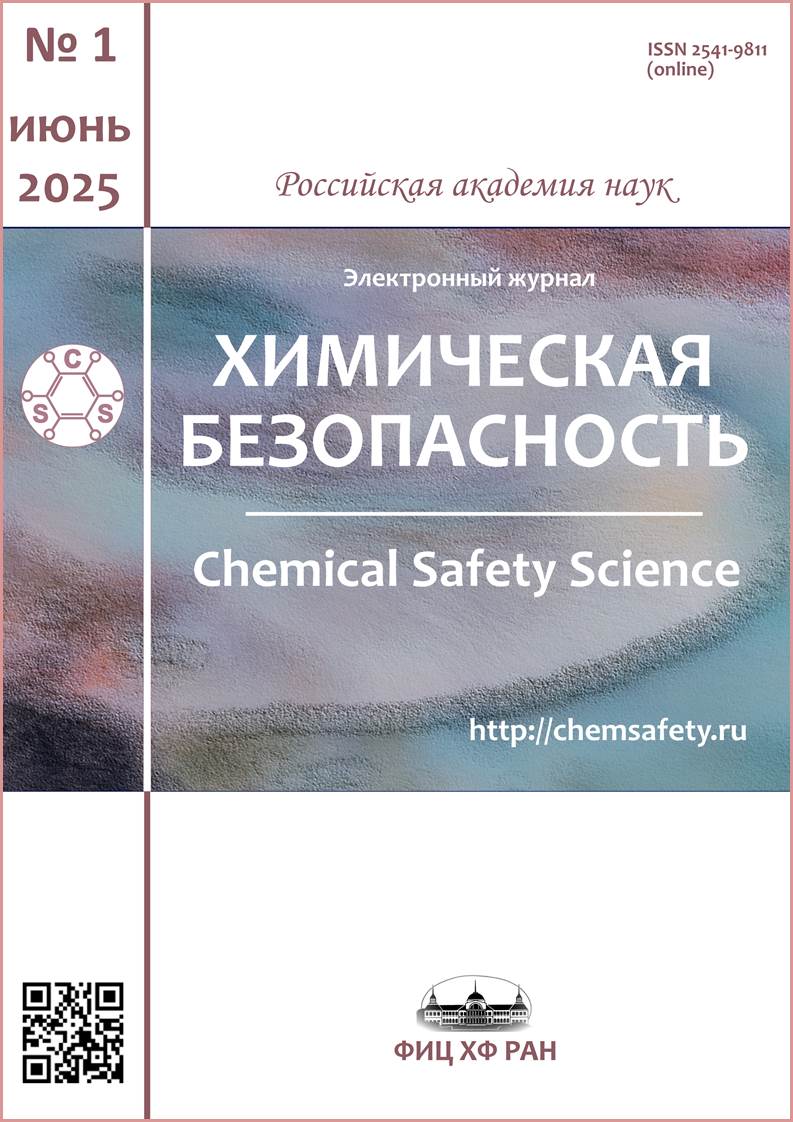Особенности расчета индивидуального риска с учетом сезонного фактора
Аннотация
Сезонные колебания и факторы оказывают значительное влияние на различные сферы деятельности современного предприятия. Понимание этих факторов позволяет более точно оценивать производственные риски и принимать обоснованные решения. Сезонные факторы в России, учитывая её размеры и разнообразие климатических зон, оказывают существенное влияние на деятельность опасных производственных объектов (далее - ОПО), а в условиях глобальных изменений климата и экономической нестабильности они становятся все более значимыми при эксплуатации ОПО. В этой связи необходим более гибкий адаптивный подход к оценке рисков, что создает потребность в исследовании и внедрении новых расчетных методик. В последние годы наблюдается рост интереса к интеграции сезонного фактора в риск-менеджмент. Это создает возможность для дальнейших исследований и обмена опытом, поэтому исследование особенностей расчета индивидуального риска с учетом сезонного фактора является актуальным как для теоретического понимания, так и для практического применения в различных отраслях. В статье рассматриваются ключевые аспекты и методологические подходы к расчету индивидуального риска с учетом сезонных колебаний температуры. Авторы анализируют существующие подходы для расчета индивидуального (потенциально-территориального) риска и отмечают, что указанные методы справедливы для технологических процессов, которые проводятся при температуре выше максимальной температуры воздуха в соответствующей климатической зоне, а для производств, технологический процесс которых проводится при температуре окружающей среды, подобный подход дает сильно завышенный результат, что приводит к излишним материальным затратам при проектировании и новом строительстве ОПО. Поэтому для производств, технологический процесс которых проводится при температуре окружающей среды, индивидуальный (потенциально-территориальный) риск предлагается рассчитывать с учетом сезонного фактора. Такая интеграция анализа влияния сезонного фактора в систему управления рисками повысит эффективность принятия решений и позволит более точно прогнозировать потенциальные угрозы.
Литература
On industrial safety of hazardous production facilities. Federal law of the Russian Federation of July 21, 1997, No. 116-FL (in Russ.).
On the protection of the rights of legal entities and individual entrepreneurs in the exercise of state control (supervision) and municipal control. Federal law of the Russian Federation of December 26, 2008, No. 294-FL (in Russ.).
On the application of a risk-based approach in the organisation of certain types of state control (supervision) and the introduction of amendments to certain acts of the Government of the Russian Federation. Resolution of the Government of the Russian Federation of August 17, 2016, No. 806 (in Russ.).
Fedosov, A.V., Zakirova, Z.A., & Abdrahimova, I.R. (2018). Prospects for risk-based approach usage in industrial safety sphere. Neftegazovoe delo = Oil and gas business, 1, 145–161 (in Russ).
Grazhdankin, A.I., Pecherkin, A.S., & Nikolaenko, O.V. (2017). On the establishment of the tolerable risk levels of accident for assessment of compensatory measures sufficiency in substantiation of safety of hazardous production facility of oil and gas complex. Bezopasnost' truda v promyshlennosti = Occupational Safety in Industry, (12), 51–57 (in Russ).
https://doi.org/10.24000/0409-2961-2017-12-51-57.
Borno, O.I., Semenov, A.Ju., Iljushhin, D.B., & Kvashnin, D.G. (2015). Criteria of the admissible risk during the declaring of industrial safety and justification of safety of the hazardous production facility. Neftegazovoe delo = Oil and gas business, (2), 446–456 (in Russ).
Lisanov, M.V. On technical regulation and acceptable risk criteria. (2004). Bezopasnost' truda v promyshlennosti = Occupational Safety in Industry, (5), 11–14 (in Russ).
GOST (State Standard) 27.012-2019 (MJeK 61882:2016). Reliability in engineering. Hazard and serviceability analyses (HAZOP) (in Russ.).
Zhukov, I.S., Lisanov, M.V., & Samuseva E.A. (2020). Criteria for tolerable social risk in case of accidents at hazardous production facilities. Bezopasnost' truda v promyshlennosti = Occupational Safety in Industry, (5), 79–86 (in Russ.). https://doi.org/10.24000/0409-2961-2020-5-79-86.
Order of the Federal Service for Environmental, Technological and Nuclear Supervision of October, 16, 2020, No. 414 “On Approval of the Procedure for drawing up a declaration of industrial safety of hazardous production facilities and the list of information to be included therein” (in Russ.).
Order of the Federal Service for Environmental, Technological and Nuclear Supervision of December 15, 2020, No. 533. “On the approval of federal norms and rules in the field of industrial safety “General rules of explosion safety for explosion- and fire-hazardous chemical, petrochemical and oil refining production facilities” (in Russ.).
Methodology for determining estimated fire risk values at production facilities. Approved by the order of the Ministry of Emergency Situations of the Russian Federation on 26.06.2024, No. 533 (in Russ.).
SP 131.13330.2020 “SNiP 23-01-99* Building climatology” (in Russ.).
GOST (State Standard) 12.1.044-2018. System of labour safety standards. Fire and explosion hazard of substances and materials. Nomenclature of indicators and methods of their determination (in Russ.).
Fire and explosion hazards of substances and materials and means of extinguishing them: in 2 books; pod red. A.N. Baratova, A.Ja. Korol'chenko. M.: Himija, 1990. 496 p. (in Russ.).
Safety Manual “Methodological basis for hazard analysis and accident risk assessment at hazardous production facilities”. Approved by the order of the of the Federal Service for Environmental, Technological and Nuclear Supervision on 03.11.2022, No. 387 (in Russ.).
Bogach, V.V., Vinogradov, V.Ju., Hajrullina, L.I., & Tuchkova, O.A. (2024). Features of determining the mass of evaporation from solutions when calculating environmental damage to the environment. Khimicheskaya Bezopasnost' = Chemical Safety Science, 8(1), 8–16 (in Russ). https://doi.org/10.25514/CHS.2024.1.26001.
Galeev, A.D., & Ponikarov, S.I. (2010). Modeling of oil evaporation from the surface of an accidental spill. Environmental protection in the oil and gas complex, 7, 13–17 (in Russ.).
Tuchkova, O.A., Gasilov, V.S., & Mustafina, T.Z. (2017). Oil and petroleum product spills. Part 2. Calculation of the amount of vaporized substance. Bulletin of the Technological University = Herald of Technological University, 20(5), 44–46 (in Russ.).
SP 12.13130.2009. Determination of categories of premises, buildings and outdoor installations in terms of explosion and fire hazards. https://docs.cntd.ru/document/1200071156 (accessed 08.03.2025) (in Russ.).
Application Manual SP 12.13130.2009. Determination of categories of premises, buildings and outdoor installations in terms of explosion and fire hazards. M.: VNIIPO, 2014. 147 p. (in Russ.).
Copyright (c) 2025 В.С. Гасилов, О.A. Тучкова, Л.И. Хайруллина, Ю.И. Сагитдинов

Это произведение доступно по лицензии Creative Commons «Attribution-NonCommercial» («Атрибуция — Некоммерческое использование») 4.0 Всемирная.












